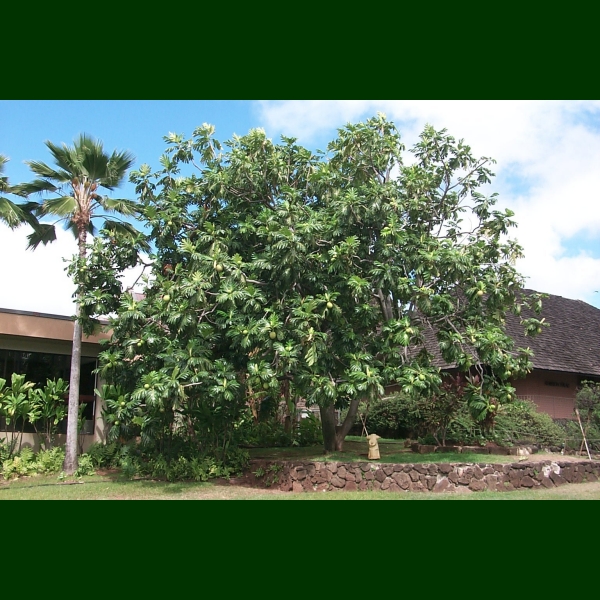Ulu - Maʻafala Variation
Description: ʻUlu is a large fruiting tree, native to Malaysia and dispersed throughout the Pacific by migrating Melanesians, Micronesians, and Polynesians. This variety of ʻUlu is a samoan variation called Maʻafala.The breadfruit is consumed as one of the main starch staples for Pacific cultures. ʻUlu is a versatile food used in over hundreds of different dishes.
ʻōlelo mua (Introduction):
Inoa(Name):
- Scientific – Artocarpus altilis
- Hawaiian – Ulu
ʻOhana: Part of Moraceae family
Kūlana olakino(Status): Introduced
Lāʻau lapaʻau(Medicinal Use):
- The milky sap of the tree when mixed with other plants were used to treat wounds and scrapes as an antioxidant.
- Sap alone can heal mouth sores.
- ʻUlu (fruit) is a source of carbohydrates that is gluten-free and low in fat.
- Contains Fiber, Protein, Calcium, Magnesium, Potassium, Phosphorus, Vitamin A and C, Lutein, b-Carotene, and Niacin.
Ways it was Used:
- The fruit is primarily consumed by Hawaiians.
- Pre-contact cooking methods include grilled over fire or steamed in an underground oven.
- Today, Ulu is cooked, baked, boiled, fried, steamed, and grilled.
- The light dense wood of the ʻUlu was fashioned into waʻa(canoe), surfboards, drums, plates, bowls, utensils, papa kuʻi ʻai ( board to pound food).
- The incised ruffled leaves were used in sanding wood, and seeds for lei making.
- The sap of the tree was used as a glue to bind wood together, used in canoe making.
Kino lau(Many Forms taken by Supernatural body): Kū

